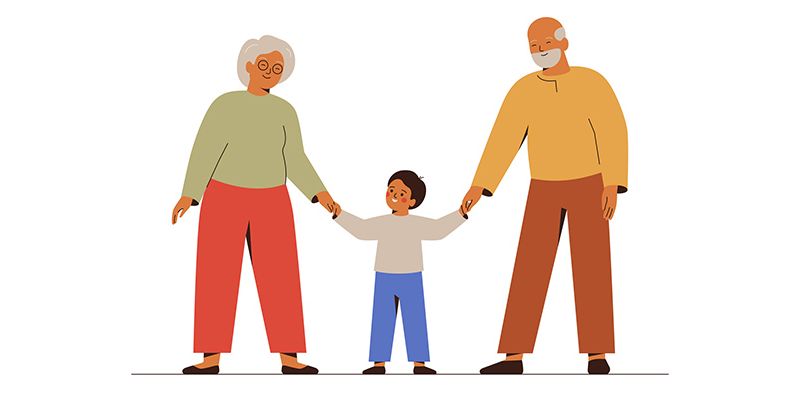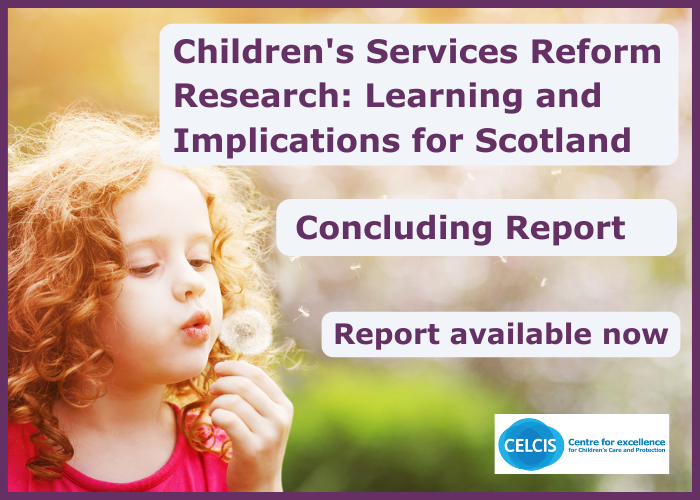We are CELCIS
CELCIS is a leading improvement and innovation centre in Scotland.
We improve children’s lives by supporting people and organisations to drive long-lasting change in the services they need, and the practices used by people responsible for their care.


The home for Protecting Children
Find out more about child protection policy and practice in Scotland.
Visit Protecting ChildrenNews

New legislation to strengthen support and rights for young people in Scotland

Latest Children's Social Work Statistics for Scotland published

Review finds thousands of children at risk of Child Criminal Exploitation

Updated practitioner guidance on kinship care assistance in Scotland
Resources
Children's Services Reform Research Concluding report
Children's Services Reform Research study: Scotland’s Children’s Services Landscape: The Views and Experiences of the Children’s Services Workforce
Children's Services Reform Research study: Mapping Integration and Outcomes Across Scotland: A Statistical Analysis
Children's Services Reform Research study: Case Studies of Transformational Reform Programmes
Blog

What story does Scotland's latest statistics on child protection tell?
In this blog post, Dr Alex McTier, Evidence and Evaluation Specialist at CELCIS, takes a closer look at Scotland’s Child Protection 2022-2023 Statistics to…

Navigating social workers’ use of voluntary care arrangements for families in Scotland
In this second in a series of blog posts to highlight findings from research on voluntary care arrangements in Scotland, Dr Robert Porter, Research Lead at…

Understanding the experiences of children growing up in kinship care in Scotland
In this blog post to mark Kinship Care Week 2024, Dr Joanna Soraghan, Data Analyst at CELCIS, the Centre for Excellence for Children’s Care and Protection,…

What does new research tell us it will take to keep The Promise?
Dr Heather Ottaway, CELCIS’s Head of Evidence and Innovation, and Principal Investigator of the Children’s Services Reform Research study considers what this…

"Nobody spoke those words to me”: Parental experiences of voluntary care arrangements in Scotland
In this first of a series of blog posts to highlight findings from research on voluntary care arrangements in Scotland, Dr Robert Porter, Research Lead at…

How lived experience of care is helping drive Scotland’s progress towards keeping The Promise
David Anderson is the Co-Chair of the Oversight Board, an independent group set up to report on the progress and pace in Scotland as it journeys towards keeping…






